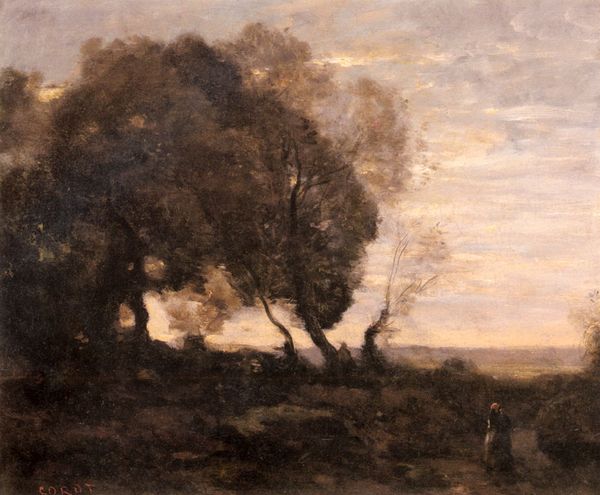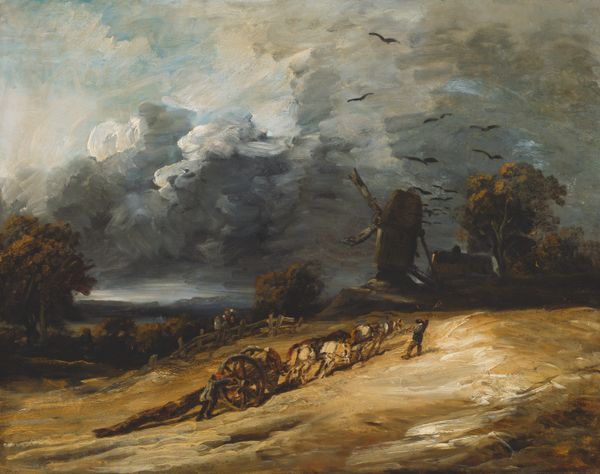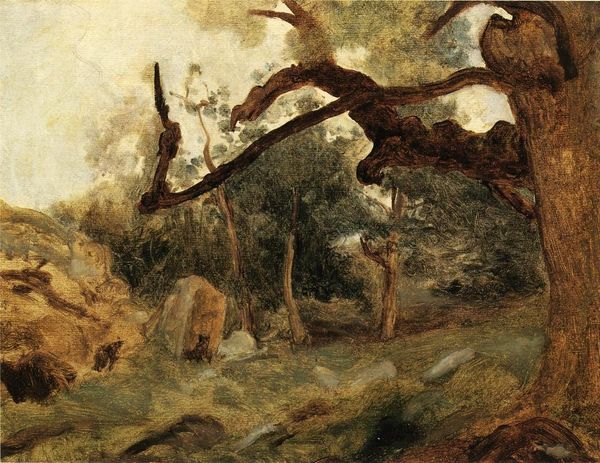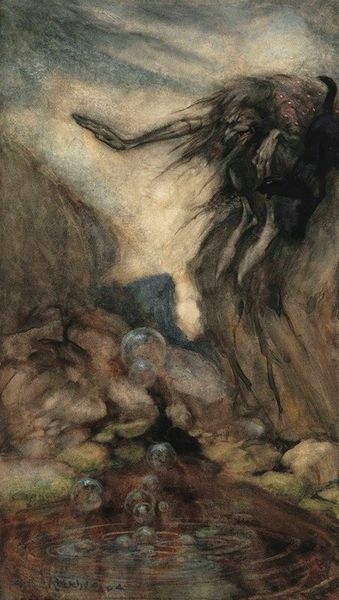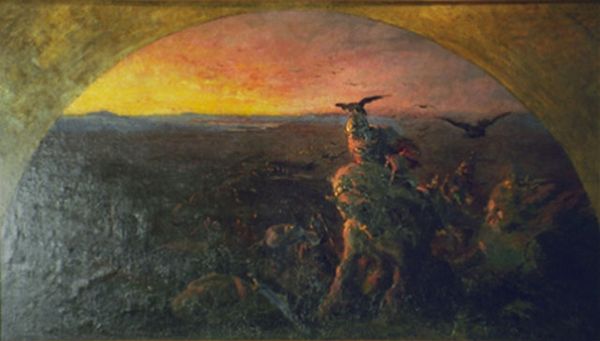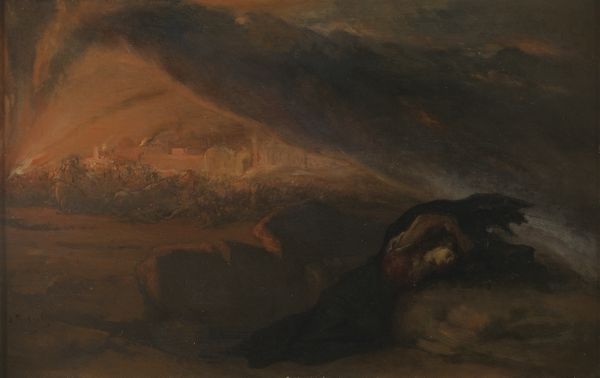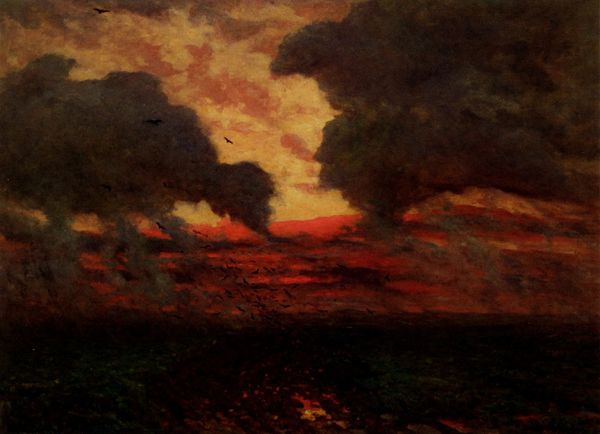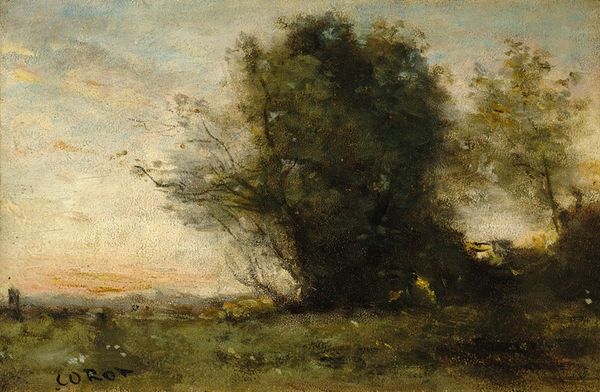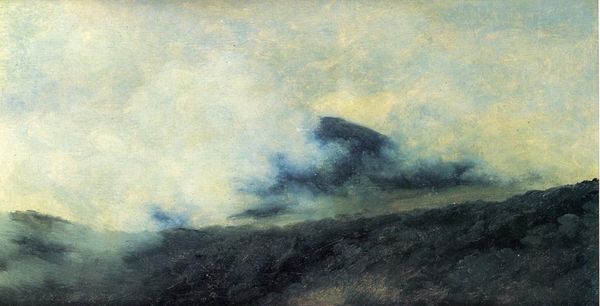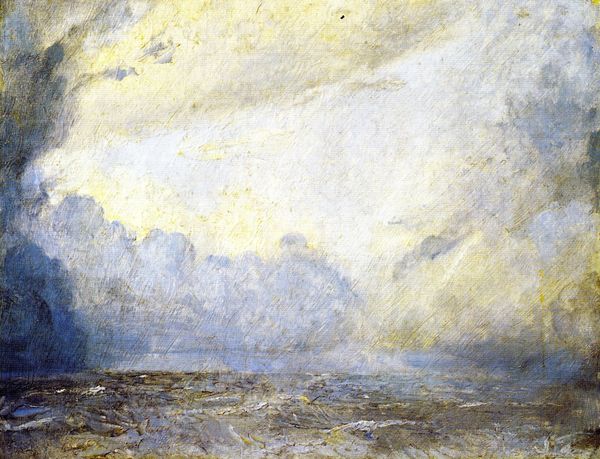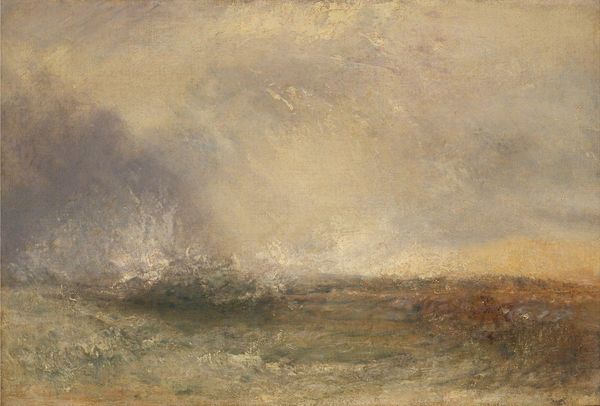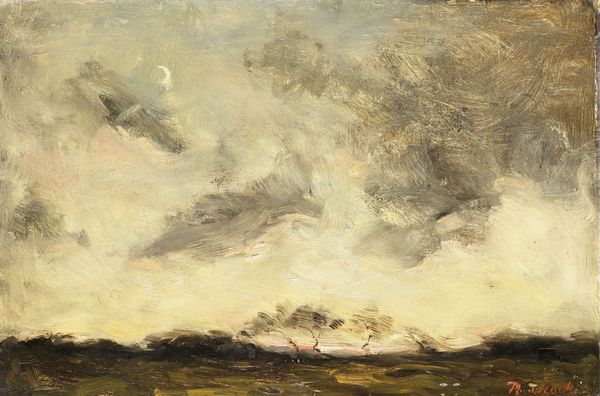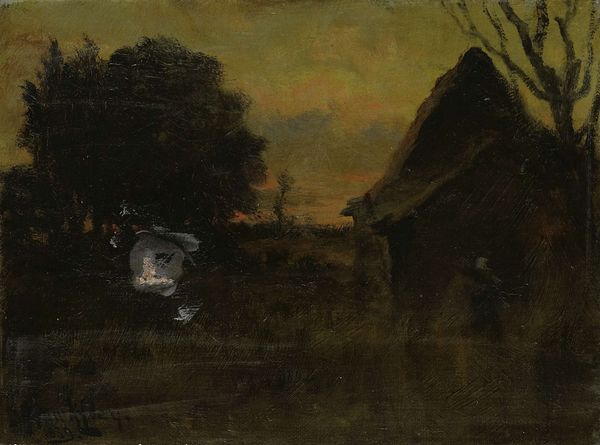
Copyright: Public domain
Editor: We’re looking at "Flight of Cranes," a landscape painting done around 1870 by Józef Chełmoński. The sky is misty, full of birds, and there's a sense of freedom, almost escape. What do you see in this painting? Curator: The overwhelming sense of 'escape' is a very astute initial reading. Considering Chełmoński’s context, the late 19th century in Poland, the symbolism becomes richer. This wasn’t simply a landscape painting; it reflected a deeper yearning for national liberation and self-determination. Think about Poland under partition at this time; how might the flight of the cranes be a metaphor for the desire of the Polish people for freedom? Editor: Oh, wow, I didn’t think about it that way. I was focused on the artistic elements, the use of plein-air to create that foggy atmosphere. But seeing it as a metaphor for national longing makes total sense. Curator: Absolutely. And consider the Romanticism movement. Artists were looking to evoke emotion, and the migratory patterns of birds would’ve resonated deeply, not just as nature, but as a powerful image of hope and movement in a time of oppression. Who decides where and when they migrate, what dictates this path? What would freedom truly represent in such volatile contexts? Editor: So, the choice of cranes is significant, not just any bird? Curator: Precisely! The crane in Polish culture is associated with freedom and migration, making it a powerful symbol in this context. Think about the socio-political implications, particularly how art like this might have served as a form of quiet resistance. How does viewing this artwork now shift your perspective on its historical value? Editor: It makes it so much more powerful. I came in thinking about artistic style, and I’m leaving with a completely new appreciation for the painting's political and cultural weight. Thanks so much for sharing your perspective. Curator: It's my pleasure. It highlights the importance of considering art within its broader historical and political context, acknowledging that art always speaks, not only of beauty, but also of our complex realities.
Comments
No comments
Be the first to comment and join the conversation on the ultimate creative platform.
